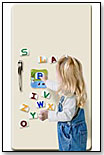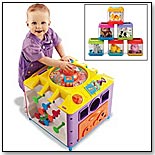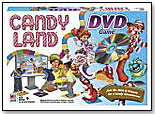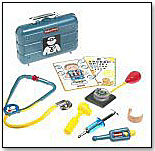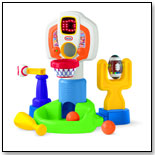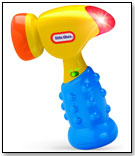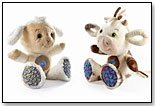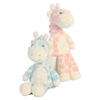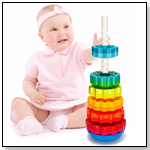|
|
Plugging In Junior Are Electronic Baby Toys Here to Stay?Whatever happened to teddy bears and blankies? Though still popular, these classics are joined by an ever-increasing number of fancy electronic gadgets for the under-5 set. How long, though, will consumers continue to go ga-ga for the latest baby gizmo? “I’m not even sure that I’d say that it’s a trend any longer — it’s a staple,” said Laurie Oravec, director of public relations and brand development for Fisher-Price. “It is part of the way toys are designed, because children are exposed to technology practically from the time they arrive home from the hospital.”
“We’re celebrating our 75th birthday this year at Fisher-Price, so I’ve become very familiar with the toys that have been in our line starting with the 1930s,” Oravec noted. “Our toys have always had sound and motion to them, and what’s really changed through the decades is how we deliver the action and the sound. Technology has played a tremendous role in that.” However, Oravec noted that the company’s approach is to incorporate technology when it truly enhances the play value of the toy. “We have really seen more technology used in our toys over the past 10 years, but that’s not to say that we don’t still do basic toys that don’t have any technology,” she said. “Our philosophy is that there is definitely room for both.” Most experts agree that the best electronic toys do not require children to be simply observers. “To the degree that electronic toys are purchased, parents should choose educational toys that require children to make a response,” said Marjorie Lindner Gunnoe, Ph.D., associate professor of psychology at Calvin College in Grand Rapids, Mich. She noted that one of the primary cognitive shifts from infancy/toddlerhood to preschool is the ability to play pretend, usually around age 2. “The best toys for children age 2 to 6 are toys that encourage children to use their imagination to act out stories. Generally speaking, a doll, figurine, doctor’s bag, train character or other toy that the child can ‘speak for’ will get much more sustained engagement than toys designed to entertain at the push of a button. Not to mention, parents love not having to replace the batteries.”
"At Baby Einstein, we strive to deliver products that will encourage parents to interact and play with their little ones," she said. "We believe parent-child interaction is essential to a baby´s healthy development.” Based on focus group research and customer feedback, Portantino said parents want to incorporate both electronic and traditional toys in the education of their infants and toddlers. Likewise, Tom Tylicki, associate product manager for infant toys at Little Tikes (ToyShow), explained that current trends are a reflection of consumer demand. “I would say that absolutely the industry is trending towards the heavy use of electronics, because it’s what children want,” Tylicki said. “We try to find the proper blend between electronics and physical/imaginative play, and center around things that are a little more basic.” The following are unusual new electronic infant and preschool products: This magnetic alphabet set teaches youngsters the basics using the kitchen fridge as its main platform and a reader to pronounce the sounds. This play center includes eight blocks and has five sides filled with activities. Babies are challenged to identify what is in each block by using hints, descriptions and sounds.
 Writer's Bio: Brenda Ruggiero is a freelance writer from western Maryland. Read more articles by this author Writer's Bio: Brenda Ruggiero is a freelance writer from western Maryland. Read more articles by this author |
|
Disclaimer Privacy Policy Career Opportunities
Use of this site constitutes acceptance of our Terms of Use.
© Copyright 2026 PlayZak®, a division of ToyDirectory.com®, Inc.

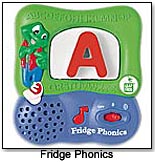 One example of the current technology movement is that the Toy Industry Association’s 2005 Toy of the Year award in the Infant/Preschool category went to two interactive electronic toys: The Fridge Phonics Magnetic set by LeapFrog Enterprises and Peek-a-Blocks Incrediblock by Fisher-Price.
One example of the current technology movement is that the Toy Industry Association’s 2005 Toy of the Year award in the Infant/Preschool category went to two interactive electronic toys: The Fridge Phonics Magnetic set by LeapFrog Enterprises and Peek-a-Blocks Incrediblock by Fisher-Price.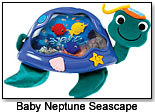 Baby Einstein (
Baby Einstein (